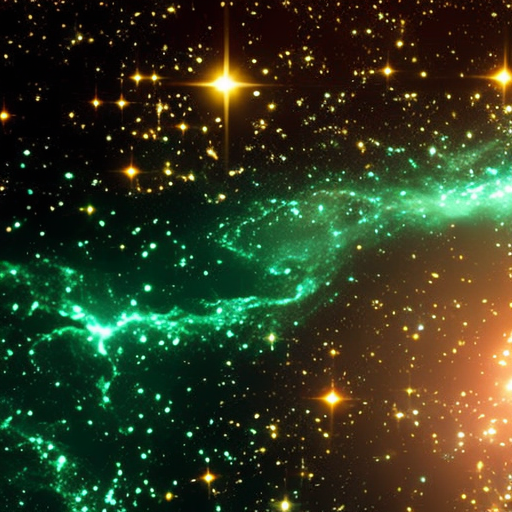Summary:
Galaxy evolution refers to the changes that occur in galaxies over time. It involves the study of how galaxies form, grow, and evolve through various processes such as mergers, star formation, and interactions with their environment. Understanding galaxy evolution is crucial for unraveling the mysteries of the universe and gaining insights into the origins and fate of galaxies.
Formation of Galaxies:
Galaxies are believed to have formed from the gravitational collapse of dense regions within the early universe. The most widely accepted theory for galaxy formation is the hierarchical model, which suggests that small structures formed first and then merged to form larger galaxies. Over time, these galaxies continued to grow through accretion of gas and the merging of smaller galaxies.
Types of Galaxies:
There are various types of galaxies, including spiral galaxies, elliptical galaxies, and irregular galaxies. Spiral galaxies, such as the Milky Way, have a distinct spiral structure with arms of stars and gas. Elliptical galaxies, on the other hand, have a more rounded and smooth shape. Irregular galaxies do not have a well-defined shape and often exhibit chaotic features.
Star Formation:
Star formation is a key process in galaxy evolution. Galaxies contain vast amounts of gas and dust, which can collapse under gravity to form new stars. The rate of star formation varies across different galaxies and is influenced by factors such as the availability of gas, the presence of nearby galaxies, and the presence of active galactic nuclei (AGN). AGN are supermassive black holes at the centers of galaxies that can release large amounts of energy and affect the surrounding gas.
Mergers and Interactions:
Galaxies can interact and merge with each other, leading to significant changes in their structure and properties. When galaxies merge, their gas and stars can be disrupted, triggering bursts of star formation and the formation of new structures, such as galactic bars and tidal tails. Mergers can also lead to the growth of supermassive black holes and the formation of active galactic nuclei.
Environmental Effects:
The environment in which a galaxy resides can have a profound impact on its evolution. Galaxies in dense environments, such as galaxy clusters, are more likely to experience interactions and mergers with other galaxies. These interactions can strip galaxies of their gas and disrupt their structure. The environment can also affect the rate of star formation and the types of galaxies that dominate a particular region.
Observational Techniques:
Studying galaxy evolution requires a combination of observational techniques across different wavelengths of light. Optical telescopes provide detailed images of galaxies, while radio telescopes can detect the emission from cold gas and trace star formation. Infrared and X-ray observations are used to study the dust and gas surrounding galaxies and the activity of supermassive black holes.
Current Research and Future Directions:
Current research in galaxy evolution focuses on understanding the processes that drive star formation, the role of mergers in galaxy growth, and the impact of environment on galaxy properties. Future missions, such as the James Webb Space Telescope and the Square Kilometre Array, will provide even more detailed observations and help answer fundamental questions about galaxy evolution.
In conclusion, galaxy evolution is a complex and fascinating field of study that seeks to understand how galaxies form, grow, and change over time. By investigating the processes of star formation, mergers, and interactions, as well as the influence of the environment, scientists are gaining insights into the origins and evolution of the vast cosmic structures that populate our universe.












